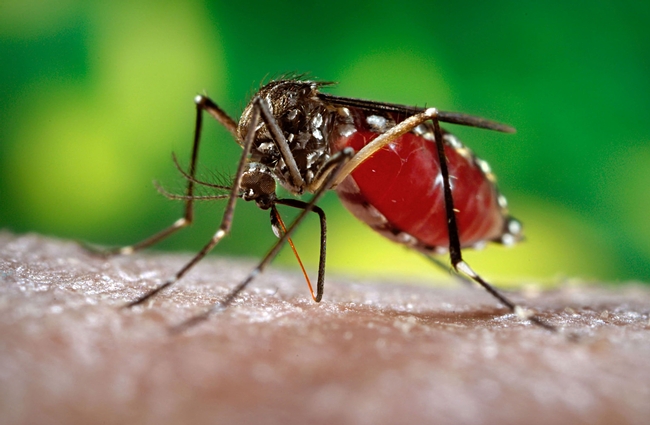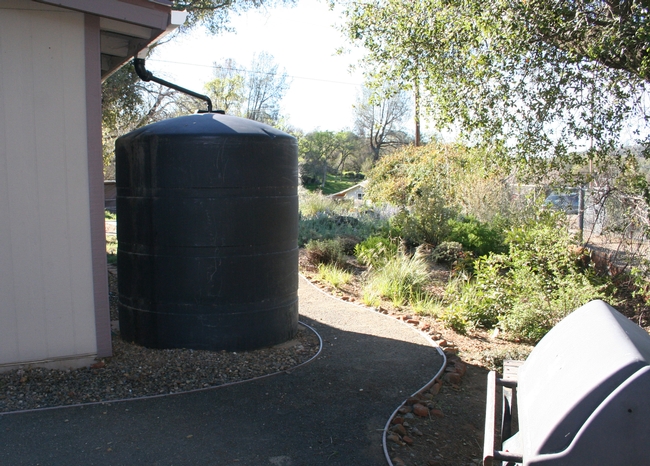Posts Tagged: Tom Scott
Firescaping can protect homes during wildfire season
Landscape + fire-prone area x protect = firescaping. The newly coined word offers hope to people who love living in wildland areas but fear a wildfire could wipe out their homes and belongings, reported Suzanne Sproul in the Inland Valley Daily Bulletin. The article also appeared in the Long Beach Press Telegram, the Daily Breeze and the LA Daily News.
UC Agriculture and Natural Resources (UC ANR) experts says its impossible to eliminate the risk, but firescaping can lessen the danger.
"I know people want to avoid moonscapes in their yards, but there are plenty of choices out there," said UC ANR Cooperative Extension specialist Tom Scott.
The article suggests homeowners
- Trim overgrown plants
- Replace highly flammable plants and trees - such as eucalyptus and palms - with less flammable plants - such as ocotillo and Calla lilies
- Use creative hardscapes, such as non-combustible fencing and inorganic mulches
The article included a link to UC ANR Cooperative Extension's information on fire safe landscaping.
Drought is a scapegoat for wildlife in urban areas
The story said a bear recently wandered into a Little League baseball game in San Luis Obispo and mountain lions are jumping fences in Northern California to kill goats. Experts said the sightings might be unusual, but not abnormal.
For decades, the article said, sprawling development into natural habitats has brought wild animals face to face with humans.
“In many cases, resources along the edge of the suburbs are far more reliable than resources out in the wild, because every year people are going to irrigate their fruit trees. Every year they're going to irrigate their lawns,” said Tom Scott, University of California Cooperative Extension specialist. “Animals are quick to use resources that are available.”
Scott said the drought is taking a toll on wildlife reproduction.
“This is the third year of drought, and that's three bad years of reproduction for wildlife species,” he said. “Wildlife population is starting to decline. It's attrition rather than a catastrophic drop, but if we went through another drought year, who knows?”
More trees infested with goldspotted oak borer
Two more trees in Idyllwild are infested with goldspotted oak borer, reported the Riverside Press-Enterprise yesterday. The announcement came at a community meeting over the weekend, in which Tom Scott, UC Cooperative Extension specialist in the Department of Natural Resources at UC Riverside, and Kevin Turner, UC Cooperative Extension goldspotted oak borer program coordinator, joined fire and forestry officials to brief local residents about the new pest threat in the area.
Residents learned how to examine oak firewood this winter and how watch their black oaks and coast live oaks this spring for signs that they may harbor the insect. Firewood or trees suspected of being infested should be reported to (951) 659-3850, the story said. More information is available at the UC Cooperative Extension GSOB website.
Fevers from the Forest
Fevers from the forest... Dengue is one of them. Dengue, transmitted by the daybiting Aedes aegypti mosquito, globally infects 50 to 100 million...

The dengue mosquito, Aedes aegypti. (Photo courtesy of James Gathany, Centers for Disease Control and Prevention)
UC researchers discuss oak health in LA
The goldspotted oak borer continues to threaten oak trees, Tom Scott, area natural resource specialist located at UC Riverside, told participants at conference on sustaining native oak woodlands in Los Angeles, the Monrovia Patch reported.
Scott said there is still a quarantine on moving firewood out of San Diego County to prevent the spread of the damaging insect.
Reporter Sandy Gillis wrote that Larry Costello, UC Cooperative Extension environmental horticulture advisor emeritus, described the power of oaks to access water deep in the soil.
UC adds 4,584 acres of forest to its research lands
The Los Angeles Times and San Francisco Chronicle reported on UC's acquisition of 4,584 acres of Northern California mixed-conifer forest as part of a PG&E bankruptcy settlement.
Debra Levi Holtz, who wrote the article for the Chronicle, quoted Keith Gilless, dean of the UC Berkeley College of Natural Resources, which houses the UC Center for Forestry, as saying, "For us, this is a dream come true to have a network of research sites on a north-south transection through the Sierra Nevada and Cascade ranges that will dramatically improve our capacity to do work on forest ecosystems that is responsive to the questions we all have about the impacts of climate change on those regions."




